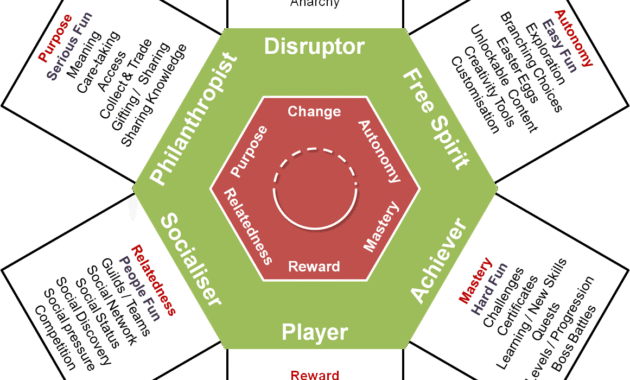Best Dating Apps for Long-Distance Relationships offer an exciting avenue for couples separated by distance to nurture their connections. In an increasingly globalized world, where love sometimes defies geographical boundaries, these platforms serve as vital tools for communication and companionship. They enable users to engage in meaningful conversations, share experiences, and maintain intimacy despite physical separation.
With various options tailored to meet the unique needs of long-distance couples, such apps incorporate features that enhance user experience, such as video calls, messaging, and collaborative activities. Understanding the importance of fostering relationships from afar, these dating apps continue to evolve, offering innovative solutions to help couples thrive in their journey together.
The topic of climate change has garnered increasing attention over the last few decades, becoming one of the most pressing global challenges of our time. As the planet continues to warm, its effects on various ecosystems, weather patterns, and human societies are becoming increasingly evident. This article seeks to explore the multifaceted dimensions of climate change, examining its causes, consequences, and potential solutions while emphasizing the critical role of collective action.Climate change refers to the long-term alteration of temperature and typical weather patterns in a place.
While climate change is a natural phenomenon, human activities have accelerated this process significantly over the past century. The primary driver of recent climate change is the increase in greenhouse gases (GHGs) in the atmosphere, particularly carbon dioxide (CO2), methane (CH4), and nitrous oxide (N2O). The Intergovernmental Panel on Climate Change (IPCC) has reported that global CO2 levels have risen by more than 40% since the pre-industrial era, primarily due to the burning of fossil fuels, deforestation, and industrial processes.The consequences of climate change are profound and far-reaching, affecting every aspect of life on Earth.
One of the most immediate effects is the increase in global temperatures. According to the latest IPCC assessment, the global average temperature has already risen by approximately 1.1 degrees Celsius since the late 19th century. This rise in temperature has been linked to a range of adverse effects, including more frequent and severe heatwaves, droughts, and floods.The impact of climate change on weather patterns is also notable.
As the planet warms, we are witnessing an increase in the intensity and frequency of extreme weather events. Hurricanes, typhoons, and cyclones are becoming more powerful, leading to devastating consequences for communities in their paths. For instance, Hurricane Harvey in 2017 produced unprecedented rainfall in Texas, resulting in catastrophic flooding. Such weather extremes pose significant risks to human safety, infrastructure, and economic stability.Another critical consequence of climate change is its impact on biodiversity and ecosystems.
The rapid alteration of habitats threatens many species with extinction. According to a 2019 report by the IPBES, around 1 million species are at risk of extinction within decades, primarily due to habitat loss driven by climate change. Coral reefs, often referred to as the “rainforests of the sea,” are particularly vulnerable, with rising ocean temperatures and acidification leading to widespread coral bleaching.
The loss of biodiversity not only threatens ecosystems but also undermines the services they provide, such as pollination, water purification, and climate regulation.The socioeconomic implications of climate change are also significant. Vulnerable populations, particularly in developing countries, are disproportionately affected by its impacts. These communities often lack the resources to adapt to changing conditions, leading to increased poverty, food insecurity, and health risks.
For instance, changes in agricultural productivity due to shifting rainfall patterns can result in food shortages and economic instability. Climate change is also a significant driver of migration, as individuals and families are forced to leave their homes in search of more stable living conditions.Addressing climate change requires a comprehensive and coordinated response at local, national, and global levels. Mitigation efforts focus on reducing GHG emissions and enhancing carbon sinks.

Transitioning to renewable energy sources, such as solar, wind, and hydroelectric power, is essential for decreasing reliance on fossil fuels. The adoption of energy-efficient technologies and practices can also contribute significantly to emissions reductions. Additionally, reforestation and afforestation initiatives play a crucial role in sequestering carbon, while sustainable land-use practices can enhance ecosystem resilience.Adaptation strategies are equally vital in addressing the impacts of climate change.
Communities must develop resilience to withstand the effects of climate change through infrastructure improvements, disaster preparedness, and sustainable resource management. For example, investing in flood defenses, improving water management systems, and adopting climate-resilient agricultural practices can help communities adapt to changing environmental conditions. Policymakers must prioritize climate adaptation in their agendas, particularly in regions most vulnerable to climate-related shocks.International cooperation is essential in combating climate change, given its global nature.
The Paris Agreement, adopted in 2015, represents a historic commitment by countries to limit global warming to well below 2 degrees Celsius, with efforts to limit the temperature increase to 1.5 degrees Celsius. This agreement emphasizes the need for countries to set and achieve their Nationally Determined Contributions (NDCs) to reduce emissions. However, progress toward these targets has been uneven, and more ambitious action is needed.Public awareness and engagement play a crucial role in addressing climate change.
Grassroots movements, such as Fridays for Future, have mobilized millions of young people worldwide to demand action on climate change. Education and awareness campaigns are essential for informing individuals about the impacts of climate change and empowering them to make sustainable choices in their daily lives. By fostering a culture of sustainability, communities can contribute to the collective effort needed to combat this global crisis.The role of innovation and technology cannot be understated in the fight against climate change.
Advances in clean energy technologies, carbon capture and storage, and sustainable agriculture practices hold great promise for reducing emissions and enhancing sustainability. Research and development in these areas should be prioritized, alongside efforts to make these technologies accessible and affordable for all communities.In conclusion, climate change is one of the most significant challenges facing humanity today, with far-reaching implications for the planet and its inhabitants.
The urgency of the situation demands immediate and concerted action to mitigate its effects and adapt to the changes that are already underway. By embracing renewable energy, enhancing resilience through adaptation, and fostering global cooperation, we can work towards a sustainable future. It is imperative that individuals, communities, governments, and organizations come together to take meaningful action against climate change, ensuring a livable planet for future generations.











